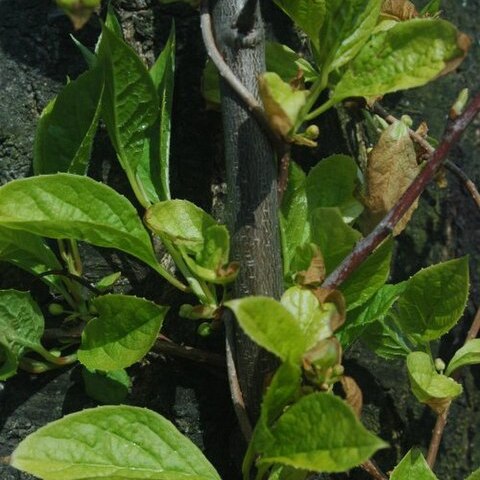Vines, woody, glabrous or with trichomes, dioecious or monoecious. Leaf blade elliptic, ovate, or obovate, papery to leathery, base cuneate to broadly cuneate and often decurrent on petiole, margin denticulate or entire, apex acute to acuminate. Flowers unisexual, axillary to bracts or leaves, generally solitary (sometimes paired or clustered in Schisandra propinqua and S. plena). Tepals 5-20. Staminate flowers: stamens 4-60, ± distinct or partially to fully connate to form a fleshy synandrium; pollen 3-or 6-colpate, distally syncolpate. Pistillate flowers: carpels 12-120, distinct; stigmatic crest forming a subulate "pseudostyle," lacking "pseudostigma"; ovary with 2(or 3) ventrally attached ovules. Fruit aggregates of apocarps; receptacle elongate; apocarps ripening red or rarely blackish, ellipsoid to obovoid. Seeds (1 or)2(or 3), smooth to rugulose.
Shrubs , twining. Leaves remote on long shoots, close on short lateral shoots. Flowers: perianth of 9-12 tepals in 2 series. Staminate flowers: stamens 5, partially or completely connate. Pistillate flowers: ovules 2-3 per locule. Berries on elongate receptacle when mature. x = 14.

